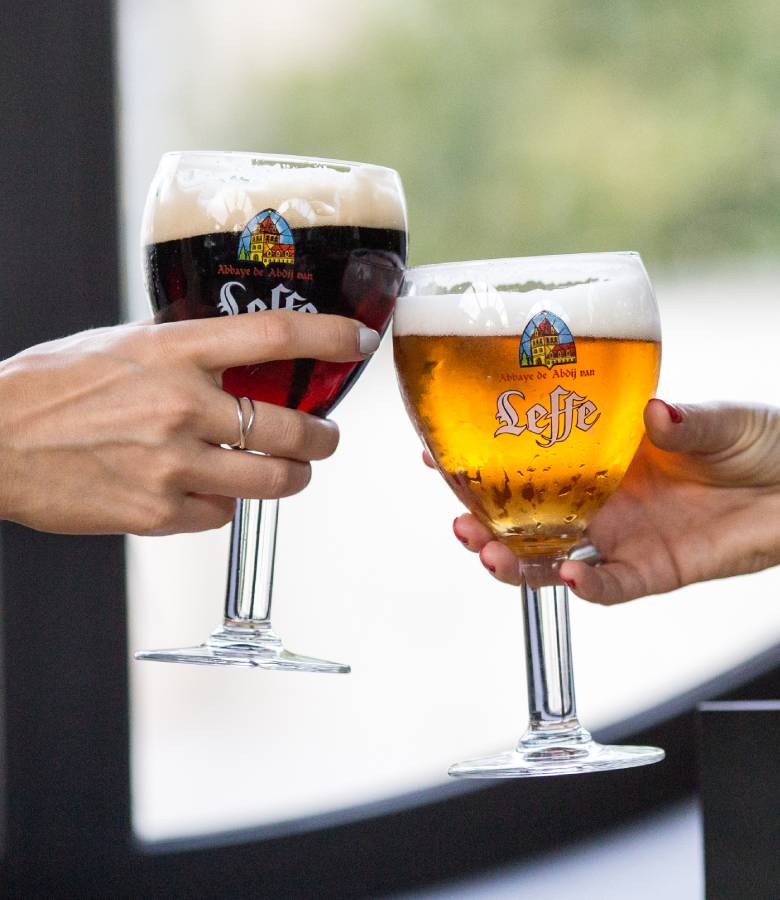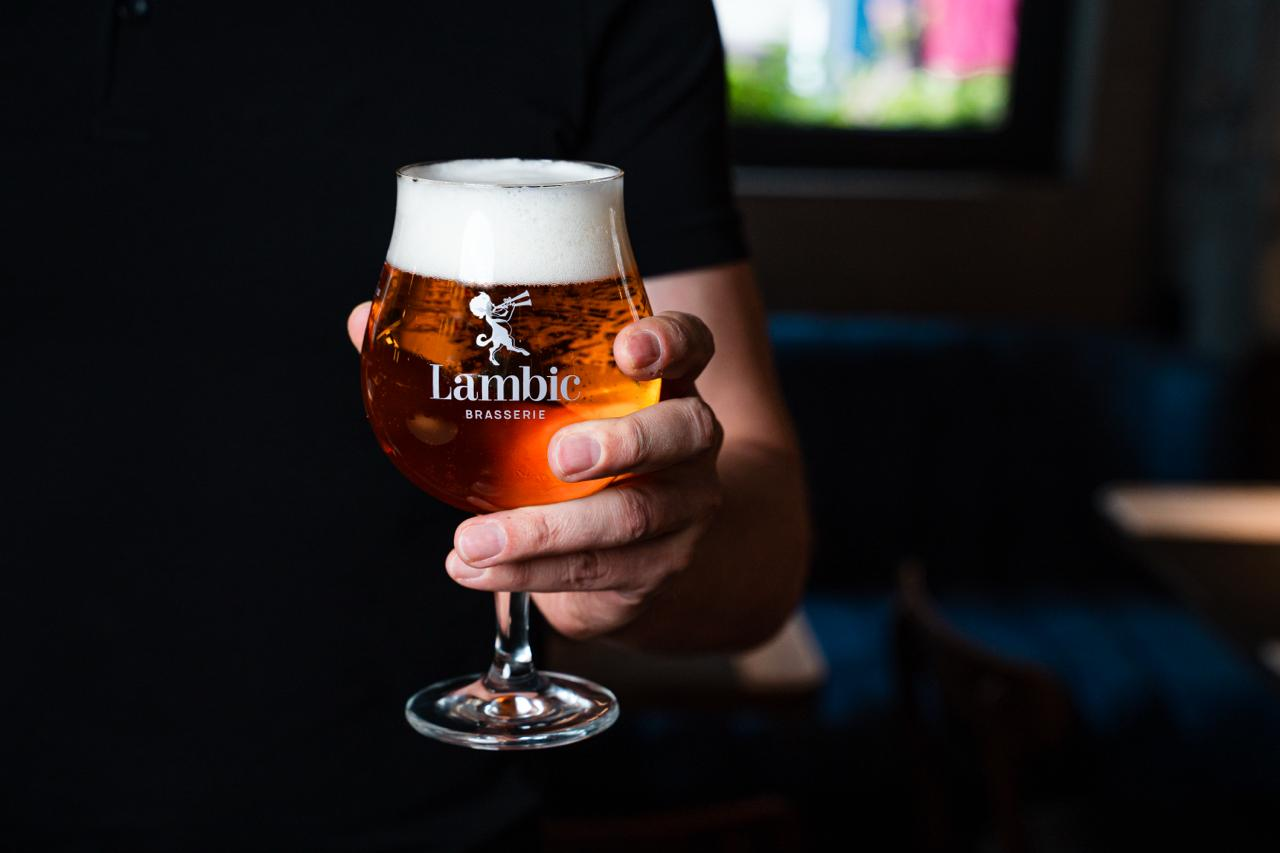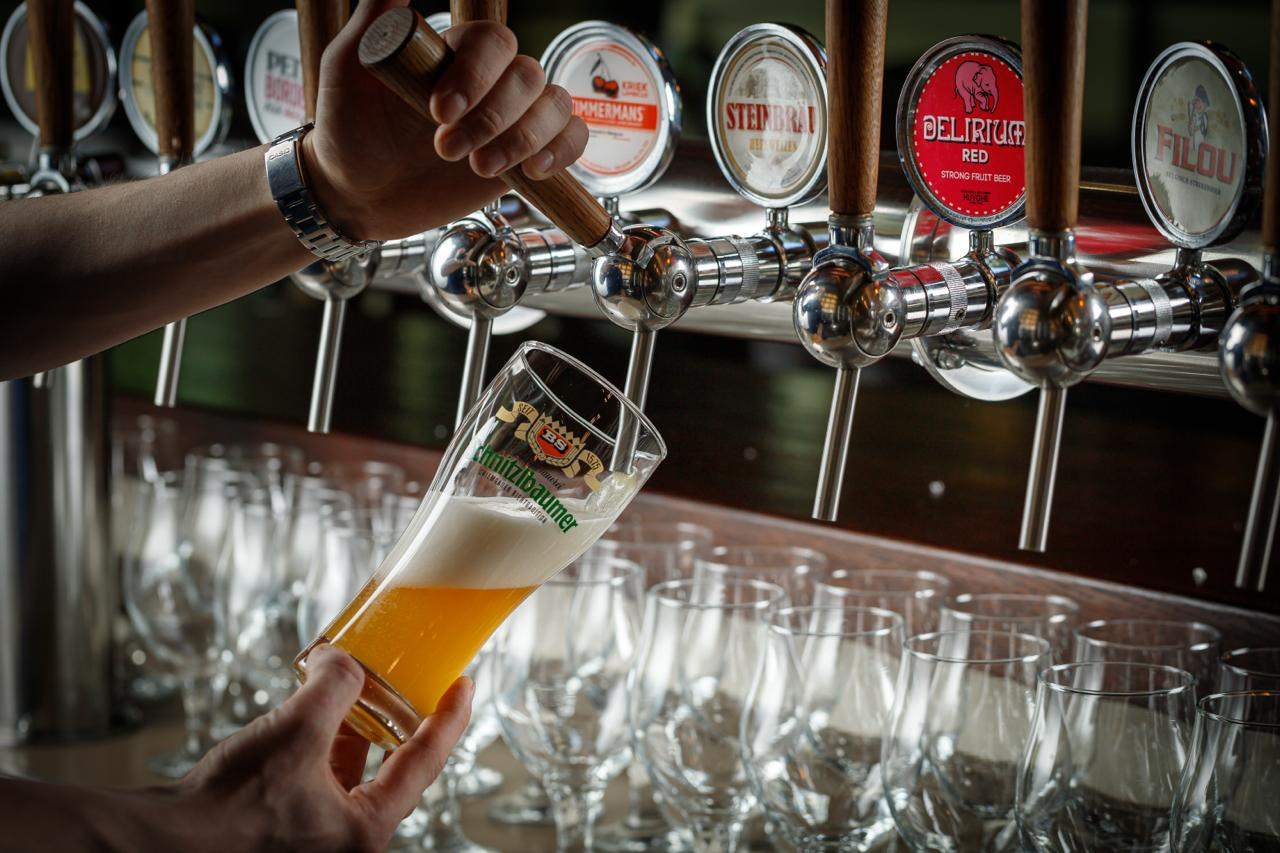Unbelievable but true: the loudest beer-related world records

While some people show their love for beer in beer restaurants, others are looking for more original ways to prove themselves. And thanks to this, the centuries-old history of beer, one after the other, includes the names of those who have stepped forward, invented something new, or simply happened to be the fastest among the competitors. Today we will talk about these fighters of the invisible beer front, as well as about the amazing records they set.
Brewers
Many beer brewers are concerned about finding new brews and combinations, but some of them create beverages so original that they secure a place in the Guinness Book of World Records. For example, the strongest beer in the world is the British Famous Falling over Water, which contains 17.3% alcohol. Also British Roger and Out with 16.9% alcohol is again a contender for the title of the most hoppy beer.
The bitterest beer in the world is Hoop, created by Peter Flower. Its bitterness level according to a special scale equals 323 units.
Another achievement of the producers, which is worth mentioning, is a beer without malt and hops, but with milk! The drink contains kefir, milk sugar, milk bacteria and extract additives. This unusual drink was created in Augsburg, Germany, and the producers themselves called it "driver's beer."
Collectors
Every lover of beer drinks probably has a small collection of beer mugs. But it turns out that you can collect not only beer cups. For example, the Norwegian Jan Solberg can boast a collection of 350 thousand beer labels, the Austrian Leo Pisker has brought from 155 countries almost 140 thousand beer mug stands, and in the house of the British David Maund there are almost 30 thousand miniature beer bottles. By the way, on such a hobby you can make good money — the largest collection of unopened cans and bottles of beer (a total of 2503 pieces) sold in 1990 at an auction for a handsome sum.
The fastest
In 1977 a record was set for the speed of drinking, which has not been broken until now. Stevenson Petrosin drank a liter of foamy drink in 1.3 seconds. So far, only a resident of Moscow came close to him — he managed to drink the same amount of beer in 1.4 seconds.
An unusual record was set by the famous Russian actor Alexander Filippenko. He sniffed out a mug of Guinness dark beer for 12 hours and was listed in the legendary Record Book. How the degree of sniffing was measured — history is silent, but doctors say that sniffing quality beer is even useful.
Many records are also set during the so-called beer races. For example, in 1981 an American Ozi, who worked as a barman in a local bar, ran the 15-metre distance with 5 pints of beer in each hand in 4 seconds. And she didn't spill a single drop!
And a runner named João Manuel de Sosa covered 132 kilometers with beer in his hands. He carried a tray with two bottles of beer and two glasses for 22 hours. It is true that the beer got hot on the way, which was not appreciated by the mayor, who was supposed to taste the drink at the finish line.
In the meantime, the Belgian brasserie chain Lambic does not set records, but simply offers the highest quality beer from around the world. Come and try it!

How to choose beer yourself: a detailed guide for beginners
Contents How to choose a delicious beer Seven signs of good beer Rules for drinking beer Beer is a low-alcohol beverage made from hops, barley malt, and yeast through fermentation. But not everything on store shelves and in bars can be called truly good beer. How can you choose a tasty beer How can you choose a tasty beer if you don't know anything about it? Here are ten simple rules to help you find a truly good drink. 1. Label To avoid buying a poor-quality product, you need to check the label for authenticity. On a quality beer, it should be affixed evenly, without wrinkles, bubbles, or damage. All information, including ingredients and shelf life, should be easy to read. And with the help of special apps, you can check the authenticity of the excise stamp to ensure the legality of the product. 2. Shelf life The shorter the shelf life, the better the quality of the beer. Stabilizers are added to the drink for long-term storage, which makes it harder on the body. For example, live unfiltered beer can only be stored for 2-3 days, and it is best to try it in breweries. Pasteurized “live” beer from the store can be stored for several weeks. Never drink beer that has expired — it can cause poisoning. 3. Strength and density The numbers 10%, 12%, or 14% on the bottle most often refer to the density of the beer, not its strength. Here is an approximate conversion to familiar degrees: — 10% density — about 4% alcohol; — 12% — about 5%; — 14% — about 6%; — 18% — about 8%. Nowadays, many manufacturers directly indicate the alcohol content. The norm is from 3% to 14%. Good beer has an alcohol-to-density ratio of about 1 to 2.5. If the balance is disturbed, alcohol may have been added to the drink. 4. Storage conditions Beer in kegs in bars or stores must be stored in a cool place. This is especially important to monitor in the summer. Heat and sunlight cause beer to spoil quickly and may cause it to ferment. Therefore, both in restaurants and supermarkets, it is worth asking where the drink was stored. It is best not to take warm bottles from the shelves. 5. Cleanliness matters Beer keg tubes should be cleaned daily or at least several times a week. If this is not done, yeast residues will spoil the taste of the drink and give it an unpleasant sourness. This means that it is better to go to trusted establishments, as the risk of encountering a poor-quality product is lower. 6. Serving tricks Before pouring beer, there is no need to wipe the glass dry. It is enough to rinse it with cold water to wash off dust and cool it down. Water droplets on the sides of the glass will help the beer reveal its taste and aroma better. 7. Counting circles After drinking a good beer, foam marks — “rings” — remain on the sides of the glass. Their number often corresponds to the number of sips. If there are no marks, the beer may be diluted. You should also be wary if the foam is too large and takes up half the glass — unscrupulous bartenders save on the drink this way. 8. Better to pour it into another container Beer can be sold in glass bottles, tin cans, or plastic containers. It is best to drink it after pouring it into a glass or mug. If you drink it straight from the bottle or can, the drink gets shaken up and quickly oxidizes, which spoils its taste. 9. What is the price? Cheap beer almost always means poor quality. Of course, a high price does not always guarantee excellent taste (part of the price may be advertising costs), but a low price is a sure sign of a bad product. 10. Choose according to taste And the last rule is that to choose a beer that you will definitely like, it is important to focus on your own taste. The main types are: porter — dark and strong; ale — thick and aromatic; lager — classic light; lambic — Belgian beer with fruity notes. Seven signs of good beer The quality of beer can be determined by several characteristics: — Good beer should not be cloudy (this also applies to unfiltered beer). Cloudiness indicates impurities or a violation of the brewing process. — There should be a slight bitterness of hops in the taste, but it should not be unpleasant. — There should be no pronounced smell of honey or acidity — this is a sign of a defect. — The taste should be dense and rich, not watery. — The foam should be dense and persistent, lasting several minutes. With light beer, the foam leaves rings as the glass is emptied. — Dark beer usually has less foam (up to 5 cm), but the bubbles last longer. — A distinct sourness and sharp bubbles indicate that the beer has fermented or contains artificial additives. Rules for consumption Have you selected a quality beer? Here is how to serve and drink it properly: — Do not mix different types of beer in one glass. It is better to finish one and pour a fresh one into a clean glass. — Choose glasses made of glass, ceramic, or porcelain. Plastic and metal are not suitable. — The optimal serving temperature is up to 8 °C. Cool beer in the refrigerator, but not in the freezer — a sharp temperature change will spoil the taste. — Pour beer correctly: hold the bottle or can 2-3 centimeters from the rim of the glass, which should be held at an angle. Pour to the middle of the glass (there is often a special mark there) to allow the foam to form and settle. — The ideal way to taste beer is in three sips: the first large (about half), the second half of what remains, and the third to finish off the rest. And don't mix beer with other alcohol. — Never add fresh beer to yesterday's leftovers. It's better to pour out any unfinished drink. Now you know how to distinguish quality beer and serve it correctly. And if you don't want to do everything yourself, come to Lambic beer restaurants! We will advise you on beer, recommend excellent snacks to go with it, and delight you with a cozy atmosphere. See you soon!
30 September 2025

Start the new season with taste: what beers to drink in autumn
Contents Lambic: born in Belgium IPA: a hoppy classic Lager: not just light Dark ale: rich and deep flavor Gose and Sours: for those who enjoy a sour taste September and October are peak months for beer lovers. With Oktoberfest and other festivals in full swing, it’s the perfect time to explore seasonal styles and discover brews that pair beautifully with crisp air and hearty food. Here’s your guide to fall-friendly beer styles and their ideal pairings. Lambic: born in Belgium Spontaneously fermented and deeply traditional, lambic offers a sour, earthy profile with notes of leather, forest, and aged cheese. Fruit lambics add berries or juices, faro includes caramelized sugar, and geuze blends vintages for wine-like complexity. Pairing: Classic lambic with cheese and seafood; fruit lambics with red meat or veal salad. IPA: a hoppy classic Bold and bitter, IPA was born out of necessity — extra hops preserved it during long voyages to India. Today, it’s a favorite for its aromatic punch and assertive bitterness. Pairing: Spicy dishes, grilled meats, kebabs, and fruit-based plates — the bitterness amplifies flavor. Lager: not just light Clean and crisp, lagers are brewed at low temperatures. While pilsners are light and hoppy, dark lagers offer caramel depth. Barrel-aged lagers are gaining popularity for their woody richness. Pairing: Spicy cuisine, pizza, burgers, and Asian or Mexican dishes — lagers balance heat and fat. Dark ale: rich and deep flavor Top-fermented and roasted, dark ales deliver flavors of nuts, chocolate, caramel, and smoke. Barrel aging adds layers of vanilla, oak, and spirits. Barleywine stands out with 10–13% ABV and aging potential. Pairing: Smoked meats, aged cheeses, and chocolate or coffee-based desserts. Serve slightly chilled (12–14°C) and sip slowly. Gose and Sours: for those who enjoy a sour taste Gose is salty and citrusy, thanks to coriander and salt. Sours — especially smoothie sours — are thick, fruity, and vibrant. Rapid fermentation with lactobacillus speeds up production. Pairing: Gose with salty snacks or sweet desserts; smoothie sours as standalone dessert drinks or digestifs. Celebrate autumn at Lambic beer restaurants. We offer the best brews from around the world, delicious food, and a cozy atmosphere. See you soon!
30 September 2025